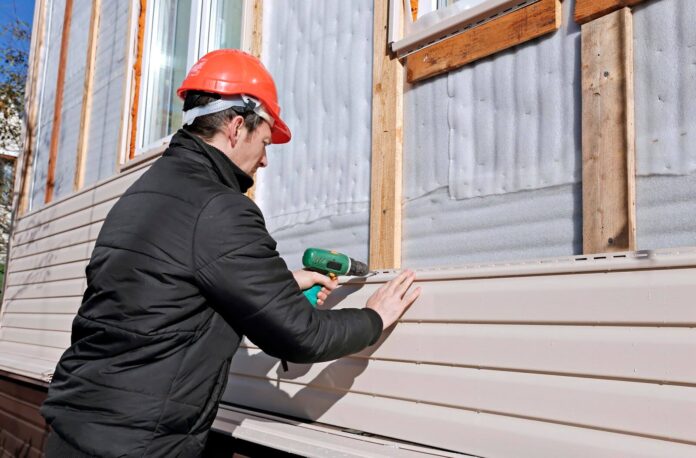Vinyl siding is a popular choice for homeowners as it is easy to maintain, cost-effective, and durable. However, it may be time to remove your vinyl siding if you plan to sell your home or need to make repairs. The most common issue with vinyl siding is the warping of the material in extreme temperatures. It can lead to problems with water getting into the walls and foundation of your home. Properly removing the vinyl siding will ensure that you do not damage the wood underneath. Replacing your siding might be one of the most visible improvements you can make to your home; it will increase the curb appeal, add value to your home, and may even help reduce your energy bills. Removing old siding or replacing a section of siding can seem like a daunting task since there are many types and styles of siding. That’s why you need siding experts serving all of Portland on your side to help guide you through the siding process.
Steps To Follow When Removing Vinyl Siding:
Removing vinyl siding can be a dangerous task. The panels are sharp, and the nails holding them can be stubborn. It is essential to remove vinyl siding correctly to avoid injury. A professional will typically charge about $1,000 for this project. But the processes and tools used by professionals to remove vinyl siding are pretty simple. Each step in the process gets used in other construction areas, such as working with drywall, replacing ceiling tiles, and installing insulation. As long as you follow these steps and take your time, you can remove old vinyl siding safely and efficiently (and increase your home value).
- Get a rough idea of how much material you will need to remove the siding. To do this, measure the height and length of each wall in feet and multiply those numbers together.
Materials Needed:
- Ladder
- Pry bar
- Safety glasses
- Gloves
- Put on a pair of work gloves and safety goggles since vinyl siding can be sharp when removed.
- With a pry bar, remove any trim boards covering the tops of windows or doors. Use a reciprocating saw to cut through nails that hold the trim boards in place. Use a flat bar to pry off any corner posts or decorative pieces at corners and roofs. Remove soffit panels from underneath overhangs. You can gently pull them down underneath or push them up from the attic space above.
- Remove all accessories attached to the house walls, such as lights, vents, and shutters, with the flat bar or unscrew them by hand or a power screw gun. Set aside all the screws and nails removed from these.
- Establish a starting point for removal. Start at one end of the house’s exterior and use a pry bar to remove the first piece of vinyl siding from the wall. You will notice that nails attach to the pieces. Two nails are used to secure vinyl siding: “d” shaped nails or “j” shaped hooks. In both cases, you will want to keep these nails to re-use them when installing new vinyl siding later on.
- Keep track of which piece is the first one you remove to ensure proper installation at the end of the project. If necessary, you should be able to slide the first piece out with your hands or a flat head screwdriver.
- Insert a flat-head screwdriver into the area under each nail and gently pull up on each pin—pull upward toward you.
- Measure and cut off a 12-inch section of siding using a circular saw. It will allow access to the nails connecting the vinyl siding pieces. If your house has a corner post, you may need to make more than one cut to reach each nail.
- Slide a zip tool beneath the cut section of the siding into the seam between that section and the next one. Pull upward on the tool and then outward to force up the locking tab on the top of the siding piece below it.
- Once you have removed enough sections of vinyl siding, you will need to repeat this step until you can pull off the rest by hand. Be careful when handling nails that may get left behind in the walls.
Vinyl siding is usually found in newer homes and is a popular choice because it is durable, low maintenance, and weather resistant. Although vinyl siding is intended to last a home’s lifetime, sometimes the homeowner prefers another type of siding or finds it necessary to replace it due to damage. Removing vinyl siding is more complex than applying it, so if you’re looking for a how-to guide, then this one will help. You should follow these steps to remove vinyl siding without damaging your home or yourself. It would be best if you had the right equipment, and these instructions will walk you through the process step-by-step. Removing the vinyl siding from your deck is a project that can be done in just a few hours by following the instructions offered here.
































